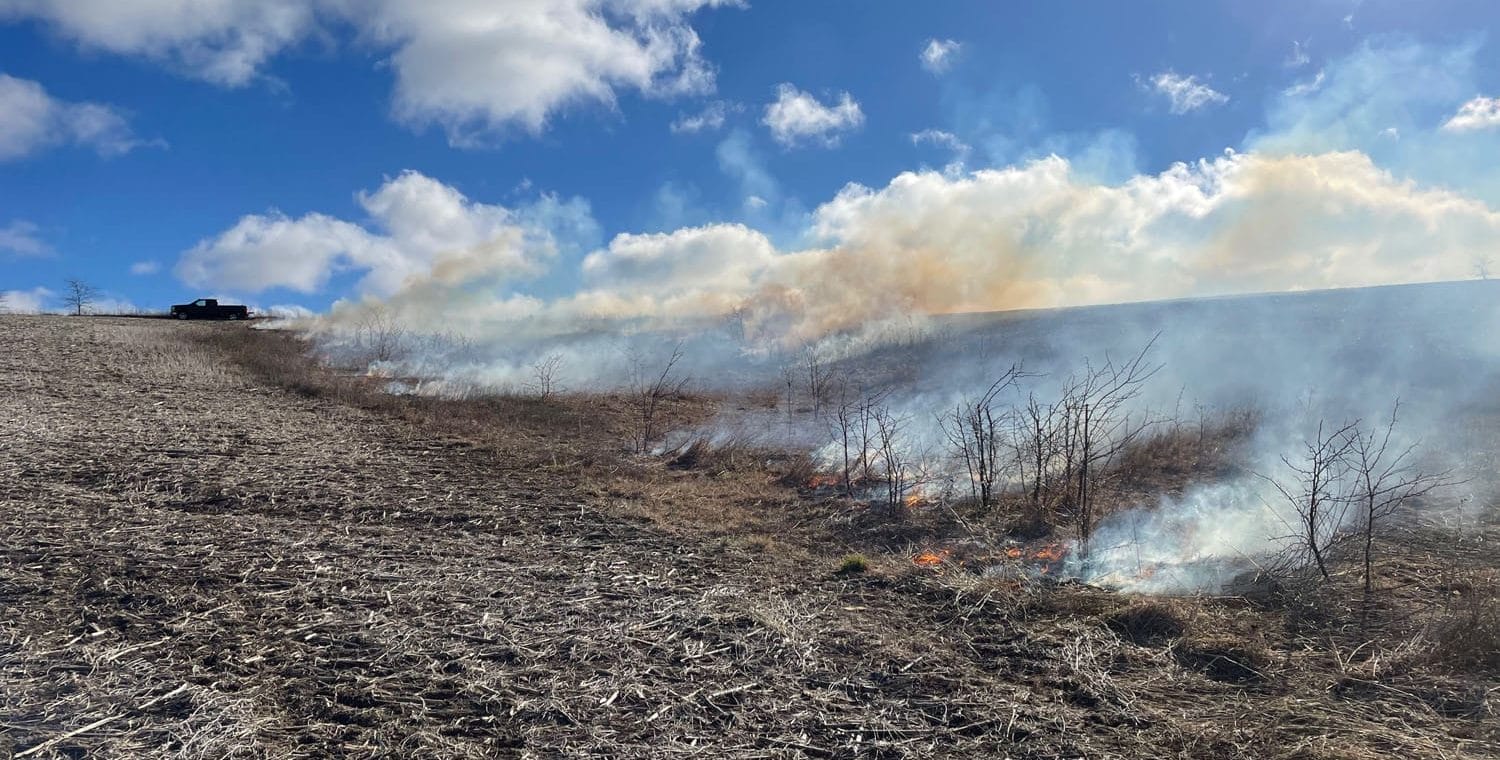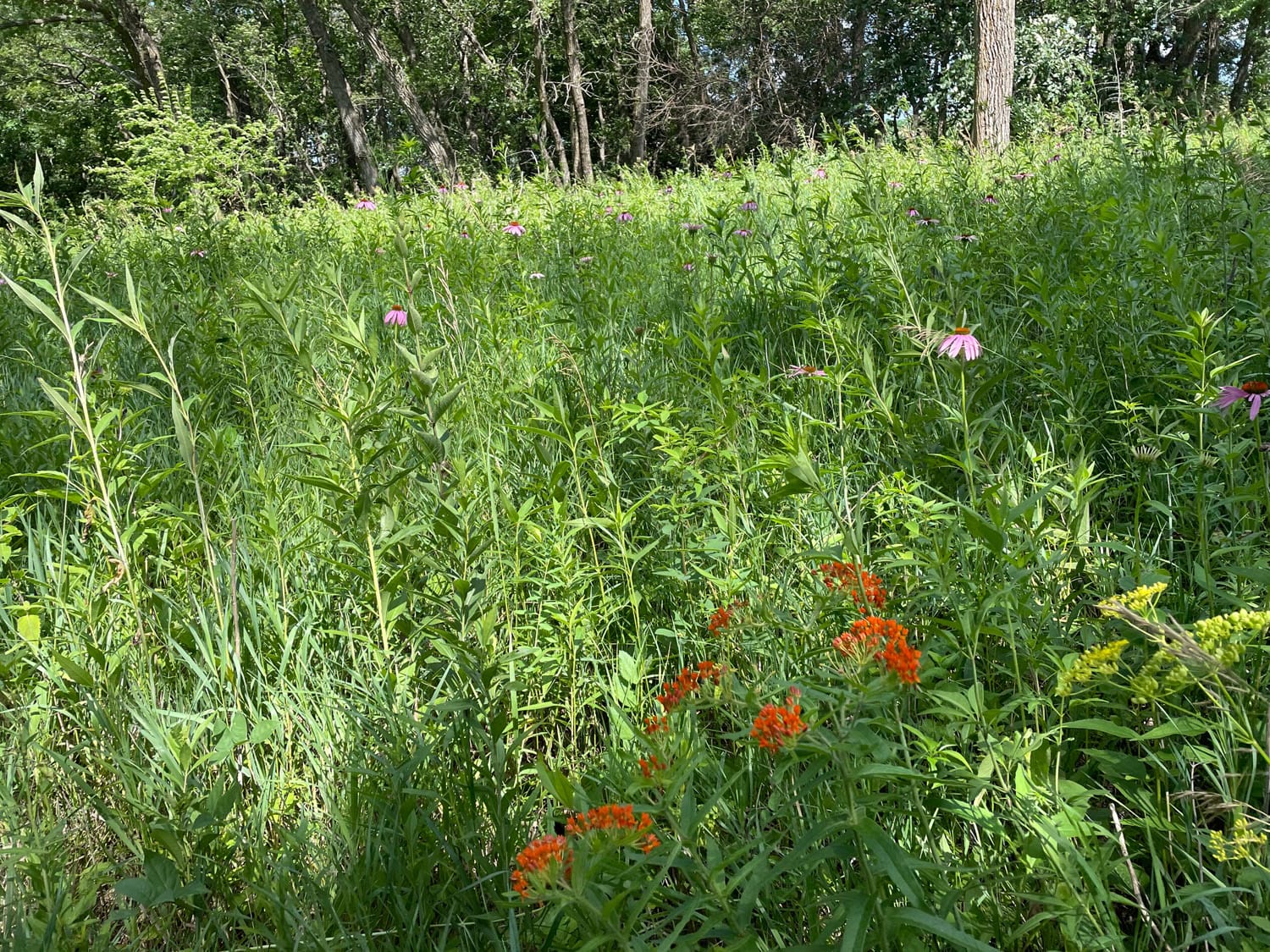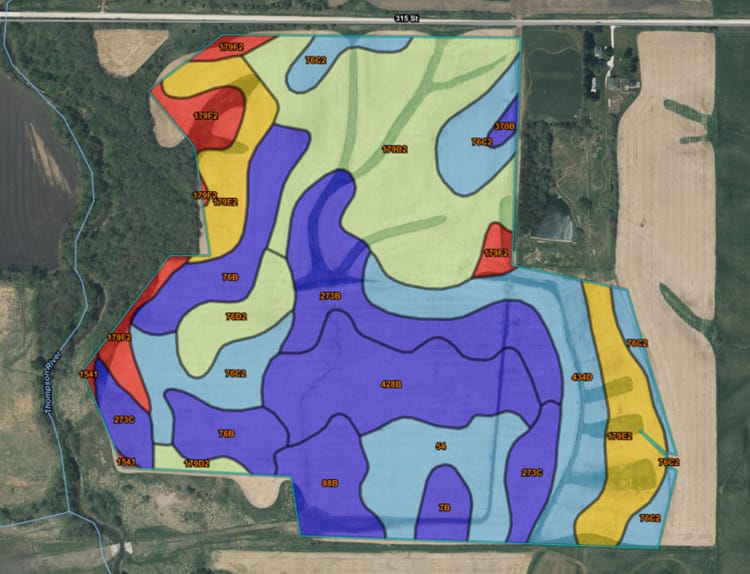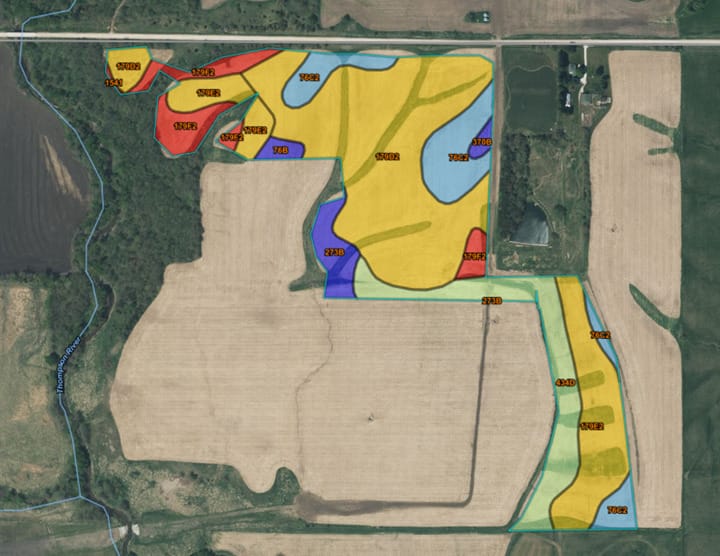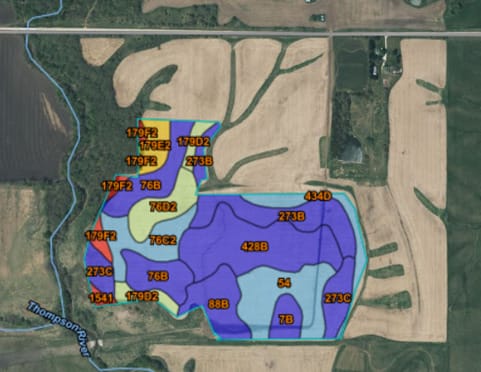Precision Conservation Analysis: The Benefits of Habitat
The Decision-Making Process
As someone who has spent more than 30 years as a wildlife biologist and restoration ecologist, I am biased toward habitat. As a landowner and farm manager, I also must carefully consider the financial considerations of developing habitat and whether I can do the work necessary to make it a successful project.
In part one of this blog series, I explained the process of a precision conservation analysis. In part two, I showed the financial analysis I went through to take 46 acres out of production. In this blog, I will explain my rationale and the other benefits of taking land out of production.
Removing Land From Production
As you can imagine, the decision was not entirely financial, although it was an important consideration. The other important parts of this decision were my goals on this farm and whether I have the ability and capacity to achieve those goals.
My goal for this farm is to maximize profit while using quality habitat to amplify ecosystem services.
It is comforting to know that right now, it looks like I will be making at least $45 more per acre with habitat versus cash rent from a corn and soybean rotation.
I say right now because there is risk. The contract I signed for the switchgrass program and CRP is for 10 years. Inflation is a risk. Not knowing what cash rents will be in 5 to 10 years is part of that risk. Not knowing if there will be demand for switchgrass in years 6-10 is a major risk.
Some risk can be mitigated by diversification. When I step back and look at our entire operation, it makes sense to take the poorest ground out of corn and soybean production and find an alternative revenue source. The 10-year payment schedule can be looked at as a guaranteed revenue source in case of a downturn in the farm economy, which is a positive.
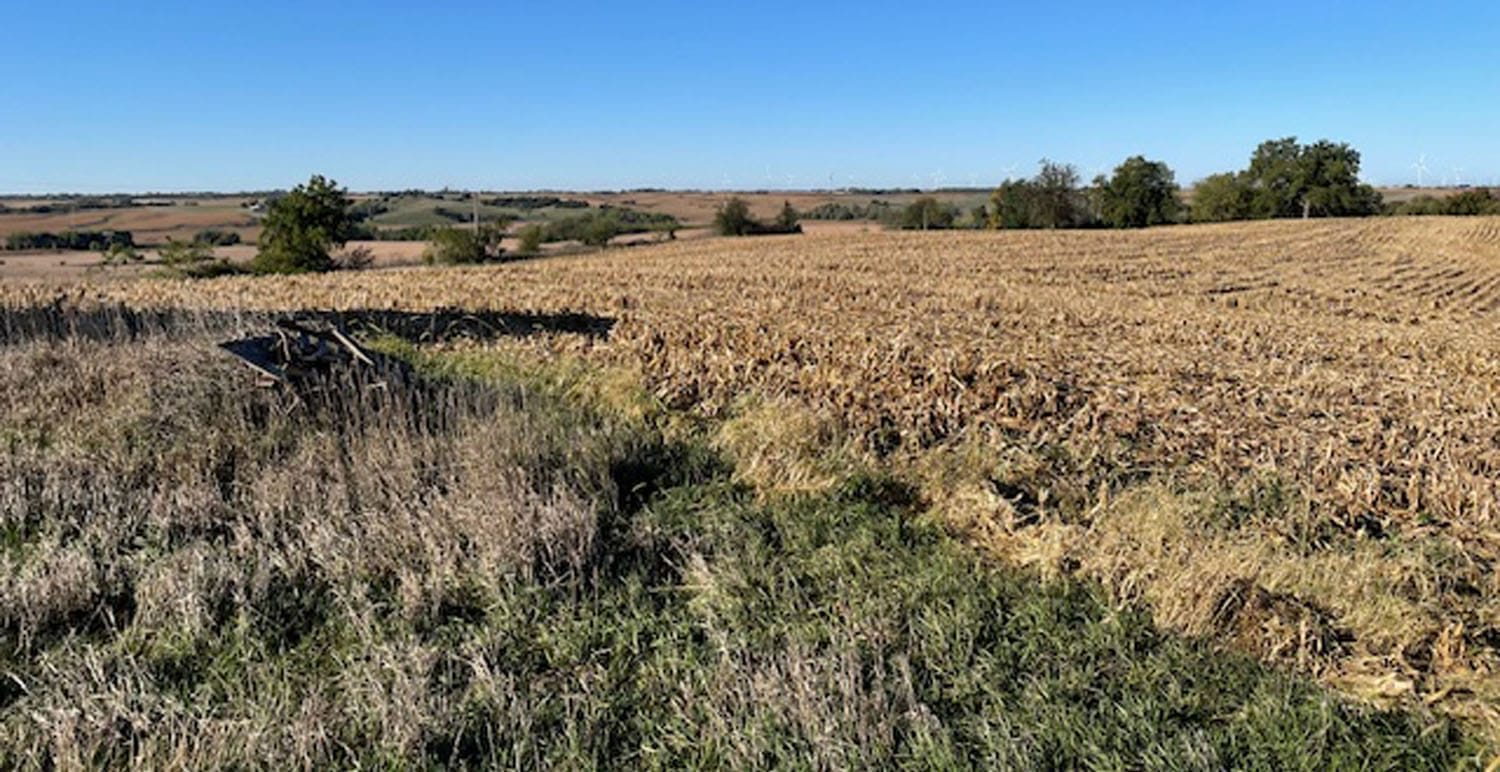 I was concerned about making sure I could do the required work for this project. One aspect that makes the Switchgrass RCPP so attractive is those 36 acres will be planted, maintained and harvested by FDC Enterprises Inc. for the first five years.
I was concerned about making sure I could do the required work for this project. One aspect that makes the Switchgrass RCPP so attractive is those 36 acres will be planted, maintained and harvested by FDC Enterprises Inc. for the first five years.
I know I would have better habitat if those 36 acres were in a diverse pollinator habitat, however, I have many other projects on my “to-do” list that will require my attention. I look at the 36 acres of switchgrass as a bonus that will reap many environmental benefits while allowing me to work on other projects.
The 10 acres of Quail SAFE CRP is one of those projects. As I mentioned, I have worked in habitat management since 1989. Creating and managing habitat can be challenging, but it has also been one of the most rewarding aspects of this profession.
I have seen fish colonize streams I have helped re-meander; ducks, grebes, bitterns and rails nest in marshes I have helped restore; and pheasants, quail, meadowlarks and bobolinks nest in prairies that I have had a hand in planting. I have seen prairies subtly change from year to year based on rainfall, a prescribed burn or some other unknown factor.
I enjoy managing habitat, have the knowledge to do this type of work and I have most of the “tools” I need. I have an ATV with a water tank that can be used to conduct prescribed burns and spray noxious weeds.
I don’t have a tractor so I will have to hire out the first two years of mowing to a local farmer. I may do the CRP seeding myself or hire that out. One nice thing about habitat restoration is that you can do much of this work yourself. There are professional habitat restoration contractors available as well.
The Benefits of Planting Habitat
The benefits of habitat are many. Native perennial cover helps prevent erosion, increases water infiltration, increases soil carbon and soil health, and reduces fertilizer and pesticide use. It also creates food, cover and space for wildlife.
Some of these benefits are personal, some are societal and others are both. If I go hunting on these 46 acres with family and friends next fall, I will certainly enjoy this “new” opportunity. The recreational value of land for hunting is tangible.
A societal benefit that can be attributed to habitat acres is water infiltration and storage. The higher the percentage of rainfall that infiltrates the soil rather than runs off the surface the better. This prevents downstream flooding which is a societal benefit.
Many of our major cities and towns are located along large rivers. The watershed of these large rivers extends over thousands of acres of land. Every acre where soil health and water infiltration can be improved by perennial cover, cover crops or good agronomic practices will have positive downstream benefits. This is also true with the reduction or elimination of pesticides and fertilizers on native perennial habitats.
I used the term “resting” in the previous blog to describe soil that was not actively farmed. I don’t think resting is an appropriate term because even though the soil will not be planted with corn or beans, as a living organism, it won’t be resting. It will be busy. It will be actively allowing a massive amount of perennial roots to penetrate its depth bringing mycorrhiza, bacteria, air, organic matter and a whole host of invertebrates. These invertebrates help aerate and beneficially till the soil and provide biological control to pests.
I consider soil health and wildlife habitat to benefit both the landowner and society. Investing in soil health by sequestering carbon reduces this greenhouse gas in the atmosphere. Having higher organic matter is a measure of soil health. One of the documented benefits of increased organic matter is the increased water-holding capacity of the soil.
I hate to admit this but earlier in my career I never thought too much about butterflies and bees. I focused more on fish, mammals, birds, reptiles and amphibians. I just didn’t have time or the interest in invertebrates.
Now, that has changed. Plants and their associated pollinators are the base of the food chain, both in natural areas and in many of our agricultural systems. We need invertebrates to pollinate our fruits and vegetables along with our native wildflowers, trees and shrubs. Many of our pollinators are beautiful and have incredible life histories.
Wildlife brings life to the farm. The sounds of a western meadowlark or bobwhite quail brings a smile to my face. The sight of a bobcat or bald eagle on the farm brings a tremendous amount of joy.
One of my goals was to create habitat for all of the ecosystem services I mentioned above. By entering these 46 acres into conservation programs, I am confident that I will achieve my goal of maximizing profitability while using quality habitat to amplify ecosystem services.
Maximizing Profitability
One additional benefit of doing a precision conservation analysis is to maximize profitability of the area that will continue to be farmed. This can be shown by evaluating the corn suitability rating (CSR2) throughout your field. By working with a precision conservation specialist at Pheasants Forever, you can see the value of taking unprofitable soils out of production. You can also conduct your own analysis using the tutorial on the Iowa State University Extension and outreach website as a guide.
By taking the most unproductive areas, which also happen to be highly erodible, out of production, we have been able to increase the average CSR2 rating 11.5 points; subtract the 63.6 CSR2 of the remaining acres from the 75.1 CSR2 of the entire field to get 11.5.
The ISU Extension and Outreach has a webpage titled Computing a Cropland Cash rental rate. According to the 2023 calculations, each CSR2 point has an approximate value of $3.20. When we multiply $3.20 by our CSR2 of 11.5 we get $36.80 per acre, meaning we should be able to raise the cash rental rate by $36.80 per acre since we are farming the best ground.
Precision conservation analysis is a data-driven process. This process has helped me make the difficult decision to take land out of production with a high level of confidence. There are risks as mentioned above, but the benefits, both environmental and financial, outweigh the risks. I am looking forward to seeing the results of this work.
What are your reasons for creating habitat? What has prevented you from converting more acres to habitat? Is there a flaw in the precision conservation process that I am not seeing? What ideas do you have for creating habitat on highly productive farmland that may not have areas of unprofitable soils?
Send me an email brad.woodson(at)practicalfarmers(dot)org and let me know what you think about the questions above.
To learn more about putting data to work for you, contact Precision Ag & Conservation Specialist Stephanie Nelson at (712) 266-3977 for assistance in Iowa or BJ Werk at (701) 238-6504 for assistance in Minnesota.

